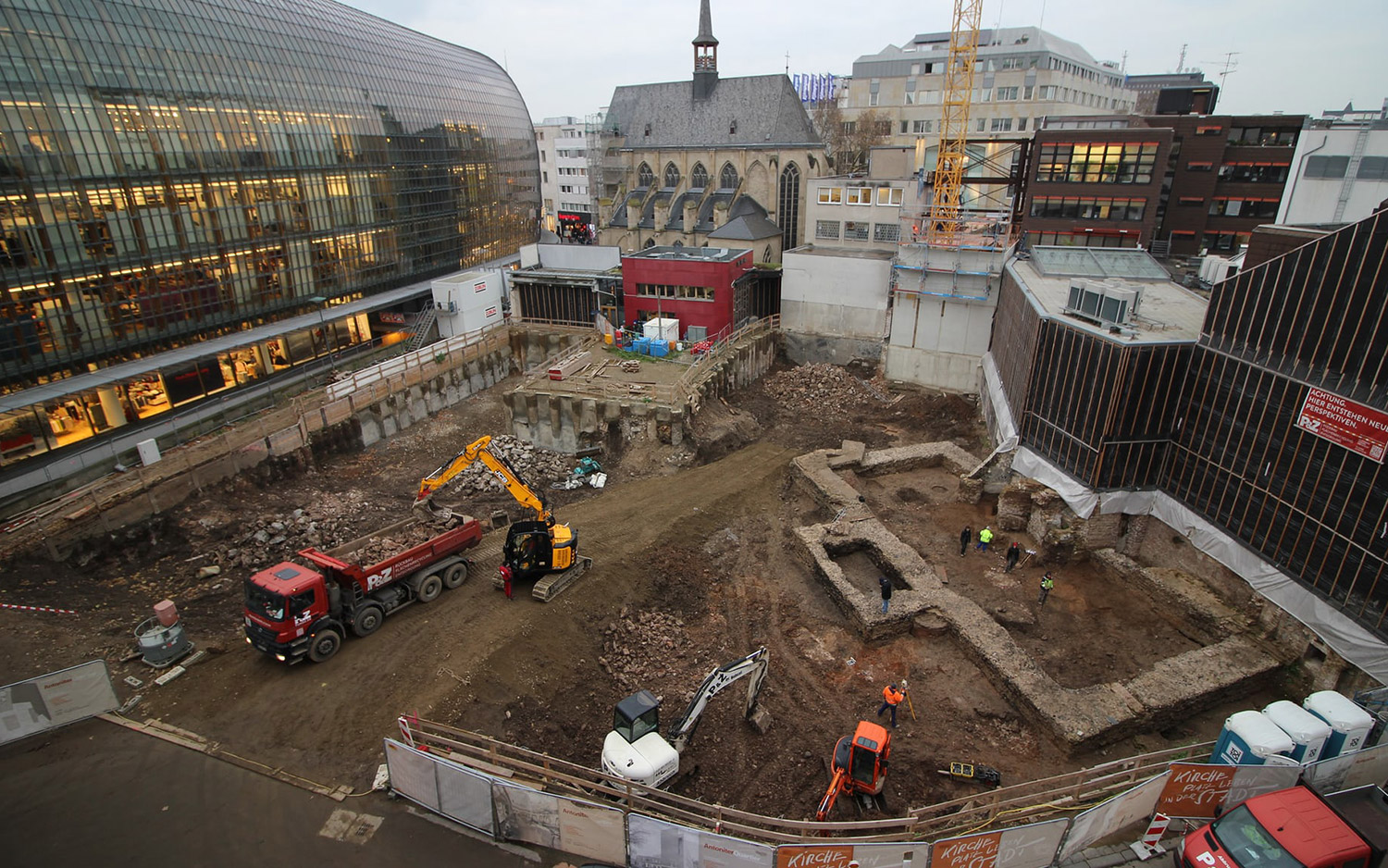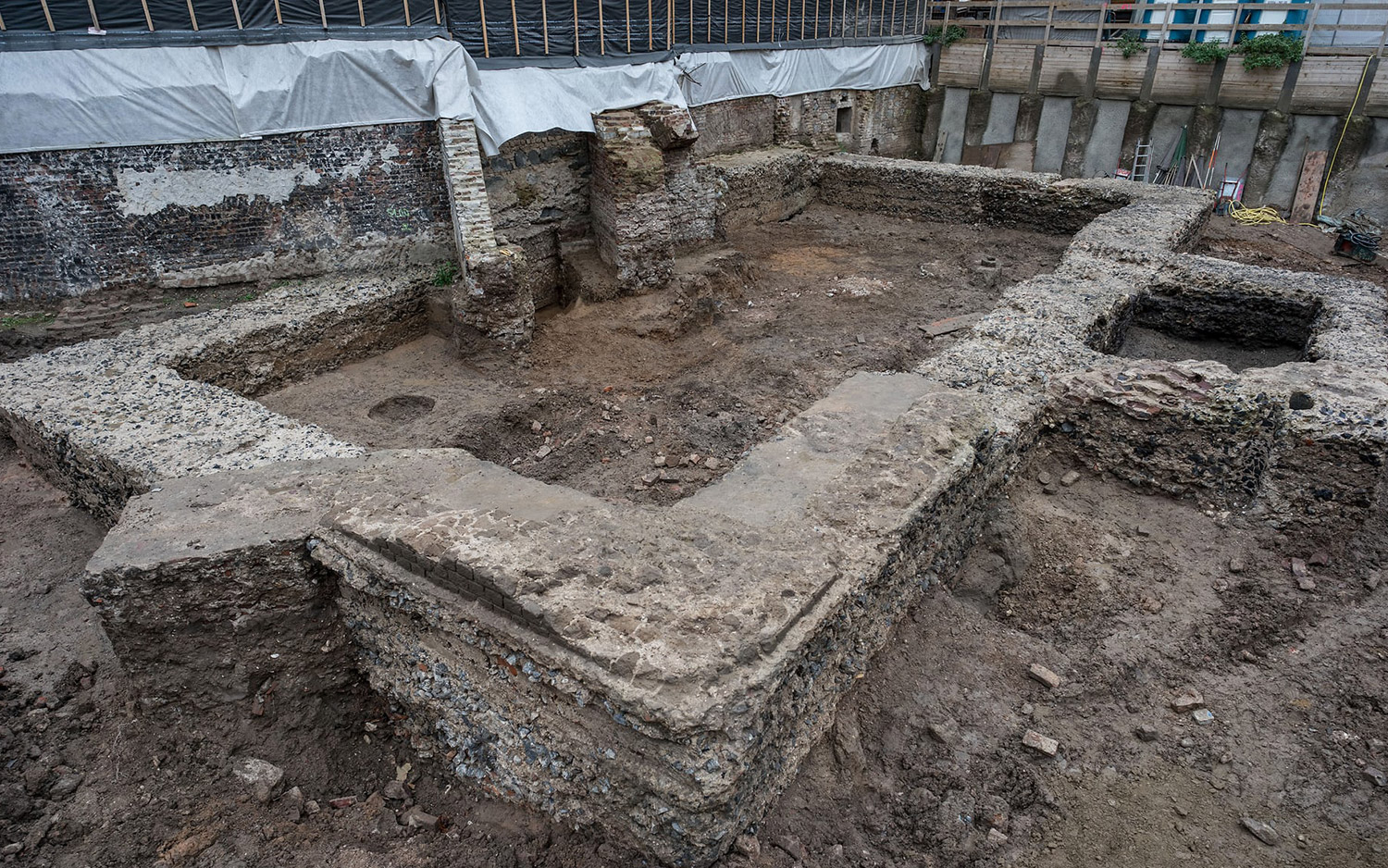Ancient Roman Library Discovered Beneath German City

Beneath the soil in Cologne, Germany, lies a bibliophile's dream: an ancient Roman library that once held up to 20,000 scrolls, according to news reports.
Archaeologists discovered the epic structure in 2017 while they were excavating the grounds of a Protestant church to build a new community center. Considering Cologne is one of Germany's oldest cities, founded in A.D. 50, it's no surprise that it still has structures dating back to Roman times.
However, archaeologists didn't figure out that the structure was a library until they found mysterious holes in the walls, each measuring about 31 inches by 20 inches (80 by 50 centimeters), The Guardian reported.
The niches in the wall were likely "cupboards for the scrolls," Dirk Schmitz, an archaeologist at the Roman-Germanic Museum in Cologne, told The Guardian. "They are very particular to libraries — you can see the same ones in the library at Ephesus [in Turkey]." [Photos: Centuries of History Revealed Beneath Roman Ruins]
While it's anyone's guess as to how many scrolls the library once housed, it's fair to say the number would have been "quite huge — maybe 20,000," Schmitz said. He noted that the newfound library is slightly smaller than the Celsus Library in Ephesus, which was built in A.D. 117. Even so, its discovery is "really incredible — a spectacular find," Schmitz said.
"[It] is, at a minimum, the earliest library in Germany, and perhaps in the northwest Roman provinces," he said. "Perhaps there are a lot of Roman towns that have libraries, but they haven't been excavated. If we had just found the foundations, we wouldn't have known it was a library. It was because it had walls, with the niches, that we could tell."
The ancient Romans chose a good spot for the building, he noted.
Get the world’s most fascinating discoveries delivered straight to your inbox.
"It is in the middle of Cologne, in the marketplace, or forum: the public space in the city center," Schmitz said. "It is built of very strong materials, and such buildings, because they are so huge, were public."
During its heyday, the library was probably two stories tall and measured about 65 feet by 30 feet (20 by 9 meters), and an extension was added later, Cologne historic preservation official Marcus Trier told Deutsche Welle (DW), a German news outlet. This extension was likely an alcove where a statue of Minerva, the Roman goddess counterpart to Greece's Athena, once stood, Schmitz told The Art Newspaper.
The ancient library's remains will be integrated into the new church community center, giving access to visitors and future archaeologists, DW reported.
Original article on Live Science.

Laura is the managing editor at Live Science. She also runs the archaeology section and the Life's Little Mysteries series. Her work has appeared in The New York Times, Scholastic, Popular Science and Spectrum, a site on autism research. She has won multiple awards from the Society of Professional Journalists and the Washington Newspaper Publishers Association for her reporting at a weekly newspaper near Seattle. Laura holds a bachelor's degree in English literature and psychology from Washington University in St. Louis and a master's degree in science writing from NYU.



